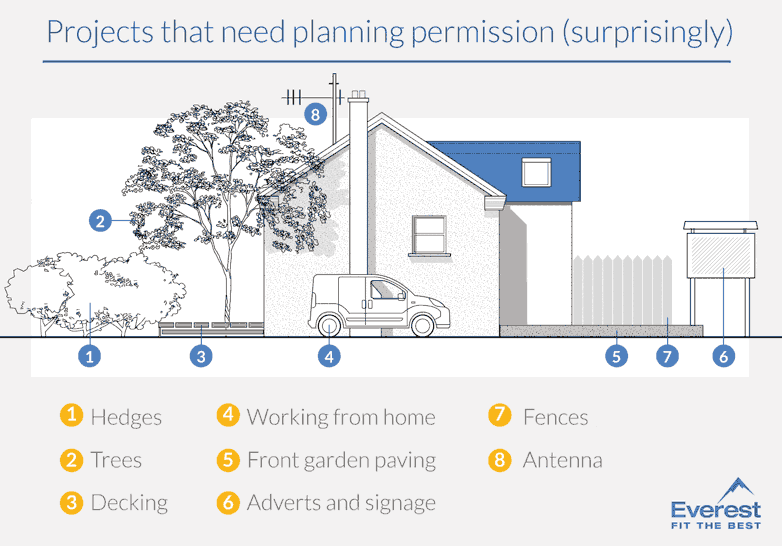Navigating planning permission can be daunting and confusing. There are a lot of complex rules surrounding planning permission: what you can and can’t build and this changes depending on where you live and the type of house you live in.
We've created a series of guides for planning permission that relate to specific home improvement projects, such as conservatories, bi-fold doors and windows.
Also, scroll down the page to see a few surprising projects that you might not realise you do need planning permission for, such as decking, fences and front garden paving.
Apart from planning permission, you also need to be aware of building regulations. Scroll down the page to see our guides.
What is planning permission?
Planning permission is a set of guidelines and rules for what you can and can't build, or make alterations to on your property.
Your Local Planning Authority may grant planning permission to complete work following a detailed application.
To apply for planning permission, you must submit a set of detailed plans to be approved. Once you obtain permission, you can only build what has been approved and any changes to the original plans must be resubmitted.
There are a few types of planning permission to be aware of:
- Full planning permission is granted on the basis of detailed plans and the project must meet the specification and design to be valid.
- Householder planning permission is a simplified process for homeowners that wish to make changes to their property for any works to alter or extend a house within the boundaries of their property.
- Outline planning permission is used to consider if a project is viable as permission in principle. Outline permission does not give you consent to begin any works and you must then specify the ‘reserved matters’ to gain full approval.
- Reserved Matters is a part-application only submitted after outline planning permission has been approved. If anything has changed from the original outline then a new full planning application must be submitted.
Before you start any building or home improvement work on your property, always check with your Local Planning Authority (LPA) to confirm if you need planning permission. Rules do change over time and there can be locally specific rules that apply.

















